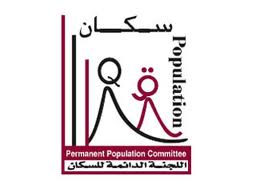By Ayman Adly/Staff Reporter
With nearly 74% of Qatar’s population living in the Doha and Al Rayyan municipalities, the government has adopted various strategies and schemes to develop new urban centres in the country, a report issued by the Permanent Population Committee (PPC) has said.
A recent study titled “Qatar Population Status 2012: Three Years after Launching the Population Policy” showed that the population density in Doha was 3,136 persons per sqkm. On the other hand, it did not exceed eight persons per sqkm in Al-Shamal Municipality. It was observed that such high population (in Doha) density “might adversely affect the main components of the environment (land, water and air), which would eventually harm public health”.
The government, on its part, has adopted a slew of measures to develop urban centres away from Doha. But the study points out that the incentives offered to encourage people to settle outside Doha and Al Rayyan are not enough. More needs to be done, such as providing more job opportunities and services in the outlying areas, to effectively deal with the issue, the study adds.
Qatar’s population has grown by around 15 times in the past four decades. According to official statistics, the figure was about 111,000 in 1970; it went up to 1,732,718 in 2011 due to the huge influx of the expatriate labour force. At present, Qatar has a population of about 1.9mn.
In response to a questionnaire by the PPC on population awareness among the Qatari society, more than 82% of the Qatari respondents expressed their belief that the country suffered from a demographic problem. The majority of the respondents identified two main aspects of this issue: the increasing population of expatriates and the competition they provided to Qataris in terms of employment opportunities.
The youth respondents focused on the negative consequences of the two aspects while others were concerned about the effects that led to an imbalance in the population structure.
The statistics indicated that the gender ratio among expatriates was 308 males to 100 females. According to the latest figures, 28.2% of those aged 15 years and above had not married before, while the majority of the population was said to be married. It was also found that 92% of those married were non-Qataris but a large number of them lived with bachelor status in the country. In effect, almost two-third of the population of 15 years and above comprised bachelors.
In terms of accommodation, the 2010 data showed that a quarter of the housing units in Qatar comprised labourers’ accommodation. The smallest units were occupied by less than seven labourers while the largest accommodated hundreds. They accounted for almost 60% of the total inhabitants of the country and three quarters of the male population living in Qatar.
The study pointed out that the challenges for the implementation of the country’s population policy in the youth and labour sectors included encouraging Qataris to marry, in particular young people, which would require more efforts. It also recommended that the newborns of nationals be given financial rewards and fresh incentives be devised for families producing more children. Further, efforts have to be made to encourage marrying the divorced and widows through various awareness programmes and, at the same time, discourage divorce.
The study recommended that the Family Consultation Centre open more branches in different parts of Qatar to provide accessible services to those targeted.

